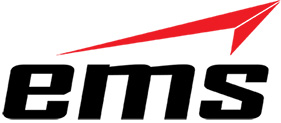
3D printing is already coming to dominate rapid prototyping services, the advantages of using 3D printing being such that those companies using old techniques struggle to compete. The future though is DDM, direct digital manufacturing, and though it will undoubtedly still have its roots in rapid prototyping services these printers will be a step beyond and will revolutionize far more than small departments in businesses: they will revolutionize every part of a manufacturing business including the entire manufacturing process but also distribution and the ability to provide bespoke designs to customers.
There are still some limitations for 3D printing but they are slowly being overcome: they of course include cost and speed but the trend for these are downwards and upwards respectively. Cost of course includes the cost of the equipment but also the cost of materials which will vary depending on the products being made, only certain metal powders can be used in 3D printing currently though, with expensive titanium being the most common. As for the cost of the equipment this is coming down as more companies enter the market and demand increases improving economies of scale. As speed of 3D printers increases of course the value from a printer will be more as it can produce more products.
With rapid prototyping services speed was not very important, with little effort companies could create 3D printers that made models in a couple of hours with a higher level of accuracy than a model that may have taken two days using traditional rapid prototyping services techniques. With direct digital manufacturing it is likely that speeds will increase quickly; using multiple lasers could cut times drastically straight away and there is little limiting how quickly a laser can work if a 3D printer is built to high enough standards.
The tipping point of course will come when 3D printers can produce goods almost as quickly as traditional manufacturing equipment with the same footprint and less user input leading to overall lower costs: to the extent that it makes financial sense to replace equipment with a return on investment likely within five to ten years say. Some may choose to invest before some may wait until later and new companies or those expanding may go for 3D printing technology straight away, it is currently mainly start-up businesses and rapidly expanding technology businesses who are beginning to use 3D printers for manufacturing.
Using 3D printers for manufacturing will have other effects though, the economies of scale from having one massive factory will drop quickly and it may make sense to have multiple factories around the world to save on transport costs. The amount of labor required will be minimal and so the extra cost of having a factory in a country with higher labor costs will still be less than shipping costs to get goods to markets. Many see the 21st century as China and India’s century already but 3D printing could negate their advantage: a supply of cheap labor.
The other major difference with DDM using 3D printers is that the technology as developed originally for rapid prototyping services allows for tweaks to designs to be made very easily with very little costs and no extra setup time. Goods made to bespoke designs and made to order will become more common then and even small companies will be able to produce a much wider range of designs for products including not only colors and patterns but also features.

